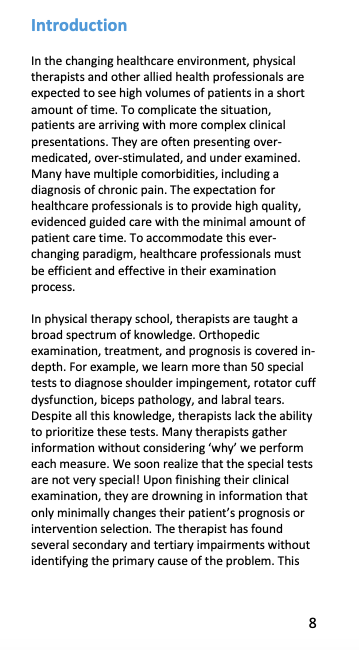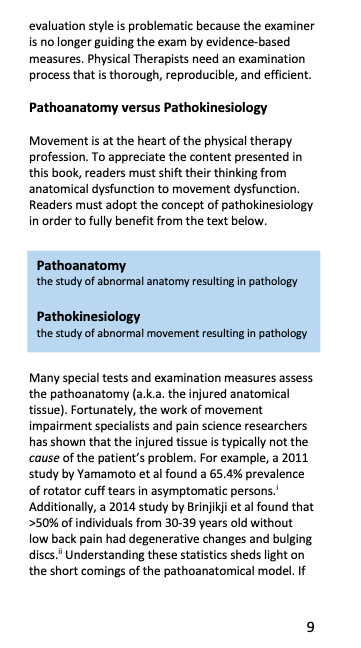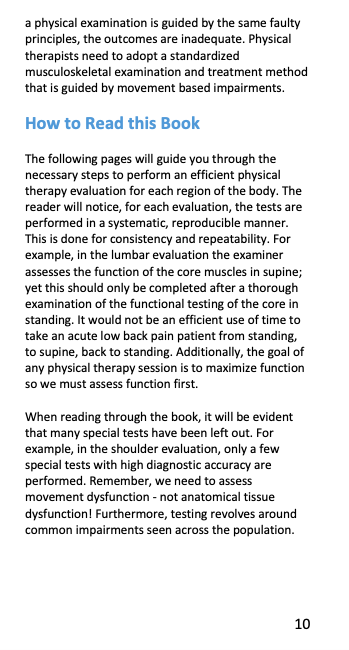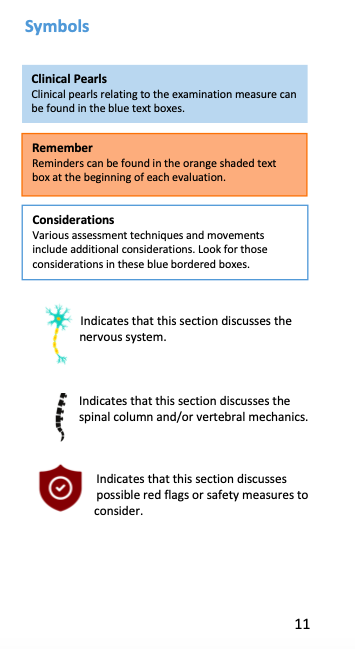The Guide to Efficient Physical Therapy Examination
The Guide to Efficient Physical Therapy Examination
The Guide to Efficient Physical Therapy Examination is a necessary read for all physical therapists, especially novice clinicians and new graduates. The author, Jim Heafner PT, DPT, OCS, was inspired to write this e-book after working in a busy orthopedic clinic, struggling to find time to treat his patients. The Ebook takes readers through a step-by-step evaluation of the lumbar spine, cervical spine, knee, and shoulder. Each examination is centered around efficiency and clinical excellence.
The Guide to Efficient Physical Therapy Examination
In physical therapy school, therapists are taught a broad spectrum of knowledge. Orthopedic examination, treatment, and prognosis is covered in-depth. For example, we learn more than 50 special tests to diagnose shoulder impingement, rotator cuff dysfunction, biceps pathology, and labral tears. Despite all this knowledge, therapists lack the ability to prioritize these tests. Many therapists gather information without considering ‘why’ we perform each measure. We soon realize that the special tests are not very special! Upon finishing their clinical examination, they are drowning in information that only minimally changes their patient’s prognosis or intervention selection. The therapist has found several secondary and tertiary impairments without identifying the primary cause of the problem. This evaluation style is problematic because the examiner is no longer guiding the exam by evidence-based measures. Physical Therapists need an examination process that is thorough, reproducible, and efficient.
The Guide to Efficient Physical Therapy Examination is a necessary read for all physical therapists, especially novice clinicians and new graduates. The author, Jim Heafner PT, DPT, OCS, was inspired to write this e-book after working in a busy orthopedic clinic, struggling to find time to treat his patients. Jim found himself spending valuable time on tests and measures that did not change his plan of care. The unnecessary testing slowed his diagnostic process and clouded his documentation. It is Jim's hope that this e-book will guide physical therapists to assess movement dysfunction and quickly arrive at a physical therapy diagnosis.
Sample Pages from the Book
Efficient Examination Templates from the Book
What to expect:
1) A step-by-step clinical guide to performing an evaluation of the lumbar spine, shoulder, cervical spine, and knee
2) Clinical pearls regarding physical therapy examination and movement based pathology
3) Deeper understanding of regional interdependence and differential diagnosis
4) 'Monday-morning' applicable clinical information
What not to expect:
1) Distal extremity examination (elbow, hand and ankle) have been intentionally left out of this text.
2) Few statistics are cited in the text. The tests and measures chosen in each examination are based off evidence which is widely available in other texts. Since a movement based physical therapy diagnosis is the goal, pathoanatomical statistics were omitted from this text.
3) This text is not an all inclusive manual focusing on specific anatomical structures. The book focuses on pathokinesiology and efficiently arriving at a movement diagnosis.










